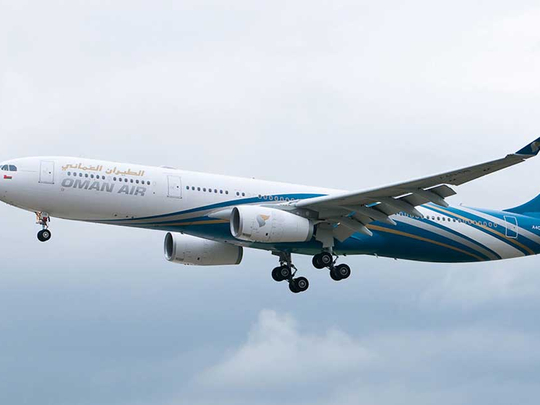
DUBAI: Oman Air, the sultanate’s state-owned carrier, is carving out its own position in the Indian market as it looks to take on its larger Gulf rivals. The Muscat-based airline said last month it wants an extra 8,000 weekly seats on flights to India within two years, increasing its current share by around 40 per cent to 29,820.
That would give it more than Qatar’s 24,800 weekly seats but less than Dubai’s 65,000 seats and Abu Dhabi’s 49,670 seats, according to Indian newswire PTI.
Oman Air, who is targeting to at least break even in 2017, is counting on increasing demand for international travel from one of the world’s fastest-growing aviation markets. The move is likely to challenge Emirates, Etihad Airways and Qatar Airways, who are some of the largest foreign carriers flying in and out of India.
“Demand is certainly there for Oman Air to expand. There are opportunities to grow transfer traffic as well as origin-destination traffic,” Binit Somaia, Director South Asia at CAPA — Centre for Aviation, told Gulf News by email.
Passenger traffic in India increased by over 20 per cent in 2015, according to the International Air Transport Association. By comparison, air travel in China grew by roughly 10 per cent and by less than 5 per cent in the United States.
Oman, like its Gulf neighbours, is home to a substantial Indian expatriate population, including a large number of blue-collar workers, which can support Oman Air’s plans to increase capacity, John Strickland, aviation expert and director of UK-based JLS Consulting, told Gulf News. “This would be the main driver of increase presence in India,” he said by email.
Oman Air is one of around 81 foreign airlines competing for passengers flying in out and of India, with a substantial number flying west through Dubai, Abu Dhabi and Doha.
Oman Air’s network is far smaller than that of the larger Gulf carriers. The Muscat-based airline flies to 44 international destinations compared to Emirates’ 138, Etihad’s 97 and Qatar Airways, which flies to over 150.
The extra Indian seats will add traffic to “Oman Air’s westbound network but will be limited by comparison with what the Gulf hub carriers are achieving,” Strickland said.
There is also limited awareness of the Oman Air brand compared to Emirates, Etihad and Qatar Airways, which are far stronger.
“Oman Air has a very strong and competitive product and their premium cabins are of particularly high quality. But this is not widely known within the corporate travel market,” Somaia said by email, whilst Oman has “not yet achieved the profile of other short destinations such as Dubai and Singapore.”
Oman Air did not respond an emailed request for an interview for this article or to emailed questions on its strategy to grow its brand in India.
Oman Air is not planning to add to its 11 Indian destinations, which include major cities Delhi and Mumbai, if its successful in increasing its seat allotment, Oman Air chief executive Paul Gregorowitsch told PTI.
“We are in the first phase trying to look in increasing our frequencies to the existing destinations where we have … 126 weekly frequencies to 175 per week by 2018,” he said. The seat increase is dependent on government-to-government negotiations between Oman and India.
However, the airline and the Omani government does want to “partner further and work together” with the Indian airlines after the Indian government recently eased restrictions surrounding foreign investemtn, Gregorowitsch said without giving further details.










